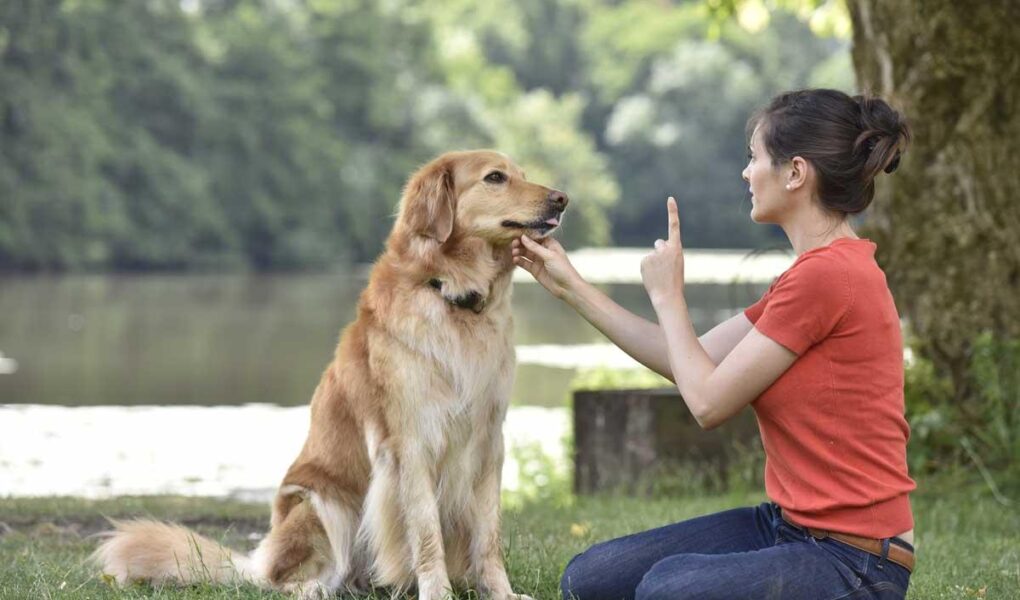Title: Unleashing the Magic: Tricks to Teach Your Dog
Introduction:
Imagine a world where your dog not only wags their tail in excitement at your arrival but also performs an array of charming tricks that never fail to elicit smiles from friends and family. Teaching your furry companion these delightful skills can deepen your bond while enhancing their mental stimulation. Whether you’re a seasoned dog owner or a new pet parent eager to embark on this rewarding adventure, this article will guide you through a variety of fun and effective tricks to teach your canine friend. From the classic ”sit” to the impressively complex “roll over,” mastering tricks is not just about entertainment – it’s about communication, discipline, and the joy of shared experiences. So grab some treats and get ready to embark on a journey of learning and fun that will leave both you and your dog eager for more!
Table of Contents
- Effective Techniques for Positive Reinforcement in Dog Training
- Engaging Activities to Enhance Learning and Bonding with Your Dog
- Common Mistakes to Avoid When Teaching Your Dog New Tricks
- The Benefits of Consistency and Patience in Canine Training Sessions
- Q&A
- In Retrospect
Effective Techniques for Positive Reinforcement in Dog Training
When it comes to dog training, positive reinforcement is a highly effective approach that encourages desired behaviors through rewards. One of the key strategies is to utilize tasty treats, which can significantly motivate your canine companion. This method involves giving your dog a small snack or a piece of their favorite food immediately after they perform the desired action, reinforcing the link between the behavior and the reward. Additionally, incorporating verbal praise such as “Good Boy!” or “Well Done!” can boost your dog’s confidence and create a positive association with training sessions.
Consistency is vital for effective training. Establishing a regular schedule for training sessions helps dogs understand when they can expect to learn and be rewarded. Another technique is to introduce clicker training, a method where a click sound marks the exact moment your dog performs the desired behavior, followed by a reward. This precise timing can accelerate the learning process. To further enhance your training, consider creating a chart that tracks your dog’s progress, documenting specific tricks they’ve mastered and areas that need improvement, as shown below:
| Tricks | Status | Notes |
|---|---|---|
| Sit | ✅ Mastered | Reliable on command |
| Lie Down | ✅ Mastered | Needs more reinforcement |
| Shake Hands | ⬜ Not Started | Plan to introduce next week |
Engaging Activities to Enhance Learning and Bonding with Your Dog
Building a strong relationship with your furry friend can be a gratifying experience, and teaching them new tricks is a perfect way to bond while enhancing their cognitive abilities. Engaging your dog with fun activities will not only brighten their day but also deepen the understanding between you two. Consider trying out these enriching activities that ignite both learning and play:
- Catch the Treat: Toss a treat and encourage your dog to catch it mid-air. This exercise sharpens their reflexes.
- Hide and Seek: Hide somewhere in your home and call your dog to find you. This game builds trust and strengthens your connection.
- Obstacle Course: Set up an indoor or outdoor obstacle course using furniture and toys. Teach them to navigate the course for exercise and mental stimulation.
To facilitate trick training, use a simple chart that showcases different tricks with their corresponding commands. This can help keep the training sessions organized and clear:
| Trick | Command |
|---|---|
| Sit | “Sit” |
| Shake Hands | “Shake” |
| Roll Over | “Roll Over” |
| Play Dead | “Bang” |
Common Mistakes to Avoid When Teaching Your Dog New Tricks
Teaching your dog new tricks can be a fun and rewarding experience, but it’s essential to approach it with care. One common mistake many dog owners make is inconsistency in commands. If one day you use the word “sit” and the next day you say “down” while expecting the same response, your furry friend will get confused. Always be clear and consistent with your verbs and gestures, ensuring that everyone in your household uses the same cues. In addition, failing to consider your dog’s limits can hinder their progress. Know your dog’s physical capabilities and ensure that the tricks you teach are appropriate for their age, breed, and fitness level. Overexertion may lead to frustration or even injury.
Another pitfall to avoid is lack of positive reinforcement. Dogs thrive on encouragement, so using treats, praise, or play during training sessions can significantly enhance their eagerness to learn. Skipping this step can result in your dog associating learning with negativity rather than fun. Furthermore, neglecting to allow for breaks can also impede your training sessions. Dogs, much like humans, need time to process what they have learned. Sessions should be kept short and engaging, allowing your pup to rest and absorb the new information without becoming overwhelmed.
The Benefits of Consistency and Patience in Canine Training Sessions
Establishing a routine in your canine training sessions is essential for fostering understanding and learning in your dog. When you approach training with consistency, your dog begins to recognize and anticipate what is expected of them. This familiarity helps to build their confidence and reduces anxiety, leading to a more productive learning environment. Consider reinforcing basic commands such as sit, stay, and come during each session, ensuring that you use the same cues and gestures consistently.
Equally important is the role of patience in the training process. Every dog learns at their own pace, and it’s crucial to acknowledge that some may require more time to grasp new skills than others. By showing patience, you not only enhance your dog’s learning experience but also strengthen the bond between you. Here are some strategies to incorporate into your training approach:
- Use short, engaging sessions to maintain focus.
- Celebrate small victories with treats or praise.
- Avoid punishment; instead, redirect their attention when mistakes happen.
| Training Element | Importance |
|---|---|
| Consistency | Builds understanding and confidence |
| Patience | Fosters a positive learning environment |
Q&A
Q&A: Tricks to Teach Your Dog
Q1: What are some fun tricks that I can teach my dog?
A1: There are countless tricks you can teach your furry friend! Some classic options include “Sit,” “Shake Hands,” and “Roll Over.” For a fun twist, try teaching them to “Play Dead” or “Fetch a Beer” if they’re up to the task! The key is to pick tricks that both you and your dog will enjoy practicing.
Q2: How should I start teaching my dog a new trick?
A2: Start with a comfortable, distraction-free space. Use positive reinforcement tactics like treats, praise, or a favorite toy. Begin with the command you want to teach and show your dog what to do. For instance, if teaching “Sit,” gently guide their rear down while saying “Sit.” Make the learning process fun and engaging!
Q3: What is the best way to praise my dog for learning a new trick?
A3: Your enthusiasm is your best tool! Use a cheerful voice, pet them gently, or give them a tasty treat when they get it right. Timing is everything—reward them immediately after they successfully perform the trick to create a strong connection between the action and the reward.
Q4: How often should I practice teaching my dog tricks?
A4: Consistency is key! Short, regular sessions—around 5-10 minutes each—are more effective than longer, infrequent ones. Aim for several practice sessions a week, but be mindful of your dog’s attention span. If they start to lose interest, it’s time for a break!
Q5: What if my dog isn’t learning as quickly as I expected?
A5: Every dog learns at their own pace, so patience is essential. If your dog isn’t picking up the trick, try breaking it down into smaller steps or changing your approach. Ensure the distractions are minimal and make it enjoyable! Remember, frustration can hinder learning for both you and your pup.
Q6: Are there specific breeds that excel at learning tricks?
A6: While any dog can learn tricks, some breeds are known for their intelligence and eagerness to please, such as Border Collies, Poodles, and Labrador Retrievers. However, don’t underestimate the potential of mixed breeds or dogs with less reputation for intelligence; they’ll surprise you with their talents!
Q7: Can teaching tricks also help with my dog’s behavior?
A7: Absolutely! Teaching your dog tricks can improve their listening skills, boost confidence, and foster a stronger bond between you two. Engaging their mind through training can also reduce behavioral issues like boredom or anxiety, making for a happier, well-adjusted pet!
Q8: What are some common mistakes to avoid when teaching tricks?
A8: Avoid using negative reinforcement, as it can lead to fear or confusion. Consistency is crucial—use the same command and gestures each time. Additionally, don’t expect your dog to catch on immediately; celebrate small victories and maintain a positive attitude throughout the learning process!
Q9: Are there resources or tools that can assist in training my dog?
A9: Indeed! Numerous resources are available, including dog training books, online videos, and professional trainers. Clicker training tools can also be very effective in reinforcing behavioral cues. Choosing the right resources tailored to your dog’s personality can make all the difference!
Q10: How can I keep my dog motivated during training?
A10: Variety is the spice of life! Keep your training sessions fresh by introducing new tricks or rotating favorite treats. Incorporating playtime and activities like agility courses can also keep your dog engaged and excited about learning. The key is to make each session a joyful experience for your pup!
With a sprinkle of patience, love, and creativity, teaching your dog tricks can become a delightful bonding experience that enhances both their life and yours!
In Retrospect
As we wrap up our exploration of tricks to teach dogs, it’s clear that the bond between human and canine is deepened through the shared experience of learning. Each trick, from the simplest shake to the more challenging roll over, serves not just as a testament to your dog’s capabilities, but also as a reflection of your patience and creativity. Remember, the journey of training is not solely about the end result; it’s about celebrating the small victories and the joy that comes from spending quality time with your furry friend. So grab that treat bag, embrace the process, and watch as your dog’s personality shines through with every new trick they master. Happy training!



